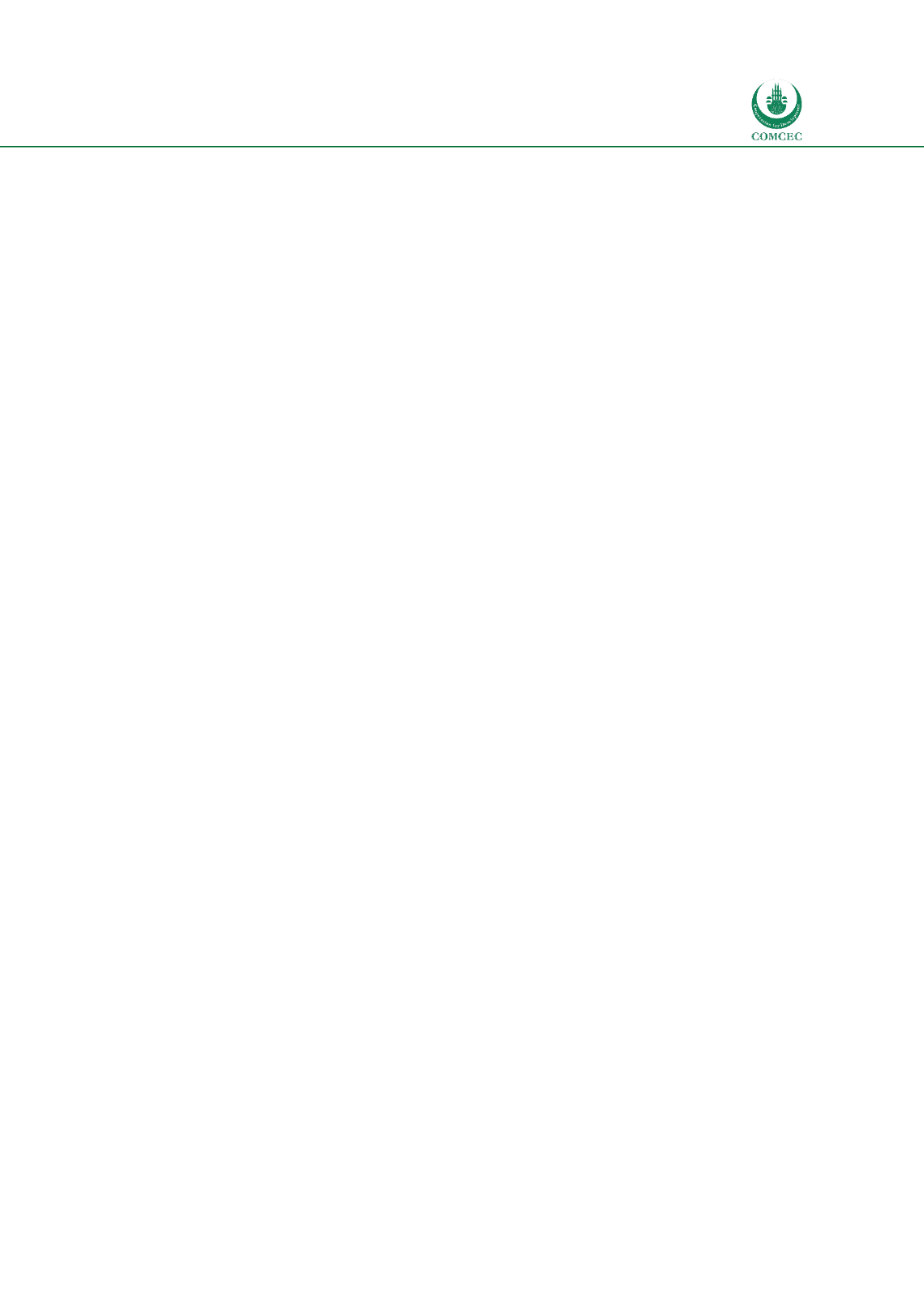

National and Global Islamic Financial Architecture:
Prolems and Possible Solutions for the OIC Member Countries
87
the Shariah. Any violation of Shariah is considered an offence that is punishable by
‘imprisonment not exceeding ten years or a fine not exceeding fifty million ringgit or both’
[IFSA 2013, Article 153 (3)].
In line with the Basel III regulatory standards, BNM issued regulatory guidelines on the
Liquidity Coverage Ratio (LCR) in 2015 covering both conventional and Islamic banks. Among
others, BNM (2015b) identifies the features of different levels of High Quality Liquid Assets
(HQLA) for the determination of LCR for Islamic banks. Level 1 HQLA includes placements with
BNM using Commodity Murabahah programs and marketable securities issued by BNM such as
Bank Negara Monetary Notes-I, BNM Mudharabah Certificates. Similarly, sukuk issued by the
International Islamic Liquidity Management Corporation (IILM) can be held to meet liquidity
needs for USD based assets (BNM 2015b: 14). The adoption of the LCR by banks will be gradual
with its partial adoption starting in June 2015 and full compliance expected by the beginning of
2019 (BNM 2014: 86).
4.4.5. Information Infrastructure and Transparency
Accounting and Auditing Framework/Transparency and Disclosure
IFSA 2013 (Division 3) requires that licensed financial institutions should maintain proper
accounting standards and prepare financial statements that can be conveniently audited.
Furthermore, the Act stipulates under ‘Standards of business conduct’ (Article 135) that BNM
may specify standards related to transparency and disclosure requiring financial institutions to
provide information that is accurate, clear, timely and not misleading. The act stipulates that
the Malaysian Financial Reporting Standards (MFRS) (which are based on the International
Financial Reporting standards IFRS) issued by the Malaysian Accounting Standards Board
(MASB) should be used for accounting purposes, but it also provides that BNM can specify
other standards to reflect specific modifications or exceptions to MFRS (BNM 2015c: 1).
BNM’s regulatory guidelines on
Financial Reporting for Islamic Banking Institutions
(BNM
2015c) require Islamic banks to prepare financial statements using MFRS. However, guidelines
hold that consideration should be given to accounting of Islamic transactions by examining
both Shariah requirements and their economic effects. The banks are required to disclose,
among other things, the types of Islamic deposits, the class of Shariah contracts used (such as
murabahab, ijarah, mudarabah
, etc), obligations to
zakat
payments and income derived from
Shariah non-compliant activities. Islamic banks must include a Shariah Committee’s Report as
a part of the Annual Report and the regulatory guidelines provide the minimum disclosure that
should be included in the report (BNM 2015c: 8-9).
BNM has also issued separate financial reporting guidelines for
takaful
operators. Takaful
operators are also required to prepare their financial reports in ‘accordance with MFRS to the
extent that the standards are consistent with
Shariah
principles’ (BNM 2015d: 5). The
guidelines indicate specific reporting issues arising in
takaful
business. For example,
takaful
operators are required to present the assets and liabilities of the takaful fund and those of the
takaful
operator separately and also issues related to how
qard
given to the
takaful
fund
should be accounted for.
SCM issued
Guidelines on Sukuk
in 2014 which includes a section entitled “Disclosure of
Material Information”. The Guidelines stipulate that if the
sukuk
is not listed on Bursa
















